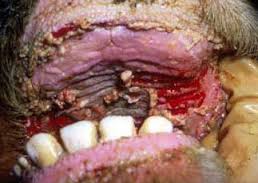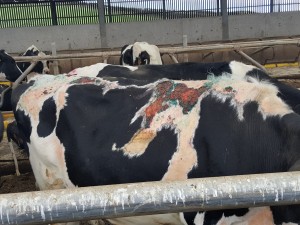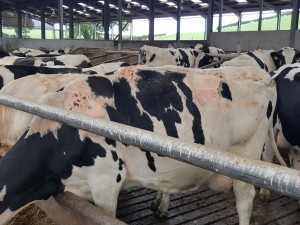Another name for this genetic condition is bovine congenital erythropoietic protoporphyria (BCEPP). BCEPP is an inherited condition most commonly reported in Limousin cattle, but has also been found in Blonde d’ Aquitane, African Short Horn cattle, and Holsteins. This condition is caused by a deficiency in an enzyme called ferrochelatase which causes excessive protoporphyrin in the body, especially in cell membranes. When protoporphyrin absorbs UV from sunlight, they create reactive oxygen species that may interact with proteins, lipids or DNA.

BCEPP was first reported in humans in 1961 and in cattle in the US in 1977. The disease has since been reported in Canada, Denmark, Jamaica, South Africa, Argentina, UK, Australia, France, Ireland and New Zealand. Because it has been found in so many countries it is most likely this disease is found worldwide.
Not all cases of Photosensitization are just genetic. More commonly an animal will eat something which will cause it to be sensitive to UV light. Most likely this type of sensitivity also has a genetic component as not all animals exhibit this sensitivity to eating St. John’s wort, Buckwheat, Bishop’s weed, Spring Parsley, clover and alfalfa, among other incriminated plants. So, in some instances the defect will only be triggered by ingestion of these plants.


In both genetic and not genetic cases, the animals get a severe sun burn which results in crusting and oozing skin. Signs can be seen in animals affected by the genetic condition as early as a few days post birth and usually manifest as ulcers and scabs on the nose, ear tips, mouth, and lips. Calves with photosensitization may drool excessively due to oral discomfort.
